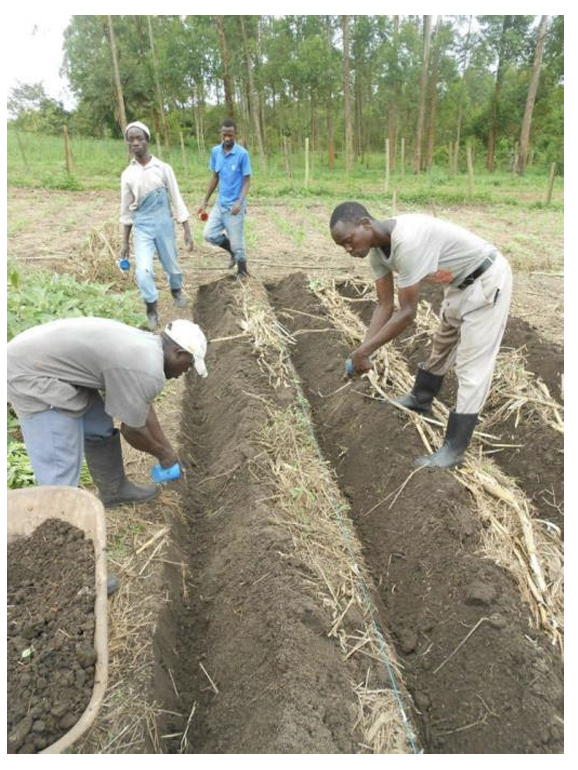Sweet Potato is highly regarded as one of the most nutritious root crops, with a good mix of carbohydrate and very high levels of Vitamin A, amongst others. Sweet Potato should become a much larger staple crop amongst African families because of its superior nutritional value when compared to other starch crops. It is easy to grow, has a high heat and drought tolerance, is very palatable and produces 10-40 tons per hectare.
Sweet Potato grows in temperature ranges of 15-33°C but with optimal ranges between 20-25°C. In Southern African summer rainfall regions, plant in September through to November, but due to it having a 4-7 month growing period it is best to plant earlier rather than later. In lower lying, warmer climates and in the tropics Sweet Potato could be grown nearly all year round.
Layout
Due to the vining nature of Sweet Potato, demarcate enough space to prevent the vines interfering with other vegetable crops. Sweet Potatoes do not do well in waterlogged conditions, so where this is a risk use the permanent raised bed system as discussed in chapter 2.4. Avoid planting in high clay content soils, as these also have poor drainage. In Uganda, the team at “Double Portion Farm” grow acres of Sweet Potato on the flat very successfully in well drained soils. Plants are grown from cuttings planted at 30cm between plants and 75cm between rows.
Lay Strings for Furrow
Place a top string or measuring rope from one 75cm permanent peg to its adjoining peg on the opposite side. Make sure the rope is taut and straight by lifting and dropping it.
Remove God’s Blanket
Move God’s Blanket 30cm downslope of the string, to expose the soil.
Soil Fracturing
If your soils are compacted give the Sweet Potatoes a good chance of success by fracturing each 75cm line to 30cm deep but due to the 15cm deep furrows this may not be necessary.
Furrows
Prepare furrows 15cm deep, every 75cm row line, being careful not to throw the soil too far downslope.
Correcting Acidic Soils
To correct acidic soils and allow for readily available plant nutrients, evenly sprinkle 1 tablespoon of woodash/bonemeal or 1 teaspoon of lime, every 60cm on the planting lines.
Manure/Low Volume Compost Inputs
Evenly spread 500ml of compost or manure per meter and cover with at least 3cm of soil to attain the 10cm planting dept
Cuttings
Sweet Potatoes are best grown from virus free cuttings of vines that have been in the field for 3 months. Store the 30cm cuttings in the shade for up 3 days to stimulate root formation before planting out.
Planting Cuttings
Ensure each cutting has nodes on it for root establishment. Place the 30cm long cuttings, touching top to tail in the furrow. Bend the topside of the cutting upwards in an L shape and cover with soil, leaving just 10cm of the topside above the ground. You should have 10cm lying horizontal, 10cm vertical but still underground, and 10cm above the ground. Cover the next cutting in the same way ending with 10cm lengths of cuttings every 30cm along the row.
God’s Blanket
No hilling up is necessary for good tuber formation but a good blanket is. Place a very thick blanket, between 5-10cm thick, right up around the cuttings, to encourage the tuber formation to take place right near the soil surface under the blanket. The thicker the blanket the better the yield and the easier it is to harvest the Sweet Potatoes with far less soil disturbance.
Harvest
Follow the runners to find the tubers and then use a fork to gently lift the Sweet Potatoes which are most often just below the blanket. This nutritious vegetable can be harvested as and when you have need of them making them a flexible addition to a home garden.


